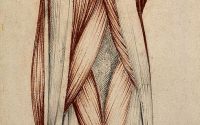Lumbar Spine Pathology as a Mimicker of Knee Pain in Older Adults
Introduction
When patients over 60 present with knee pain, osteoarthritis (OA) or meniscal tears are common diagnoses. However, when imaging reveals minimal knee pathology and the physical exam is benign, lumbar spine issues—particularly L3-4 radiculopathy—should be considered as a potential source of referred pain.
Anatomy and Mechanism of Referred Pain
The L2, L3, and L4 nerve roots contribute to the femoral nerve, which innervates the anterior thigh and medial knee. L3 radiculopathy often manifests as medial knee pain, mimicking primary knee pathology. Unlike classic radicular pain (sharp, shooting), this referred pain can be dull and localized, making diagnosis challenging.
Common L3-4 Pathologies Leading to Knee Pain
- L3-4 Disc Herniation
- Rare (1.8–9% of lumbar disc herniations) but more common in older adults.
- Often presents with foraminal or far-lateral herniation, compressing the L3 nerve root.
- Case studies show knee pain resolution after lumbar discectomy, even in patients misdiagnosed with meniscal tears.
- L3-4 Spinal Stenosis
- Central or foraminal stenosis can irritate the L3 or L4 nerve roots.
- Studies link loss of L3-4 disc height with knee pain in elderly patients.
- Selective nerve root blocks (SNIs) can help confirm diagnosis before surgical intervention.
Differentiating Knee Pain from Referred Spinal Pain
| Feature | Primary Knee Pain | Referred (L3-4) Pain |
|---|---|---|
| Mechanical symptoms | Yes (clicking, locking) | No |
| Pain with joint loading | Yes | No |
| Night pain (awakening) | Rare | Common |
| Numbness/weakness | No | Yes (L3 distribution) |
| Patellar reflex | Normal | Diminished/absent |
| Quadriceps atrophy | No | Possible |
Diagnostic Approach
- History: Assess for non-mechanical pain, night awakenings, and neurological symptoms.
- Exam: Check patellar reflex, quadriceps strength, and L3 dermatomal sensation.
- Imaging: If knee findings are incongruent, consider lumbar MRI/CT, focusing on foraminal and far-lateral regions.
- Diagnostic Blocks: Selective nerve root injections (SNIs) can confirm radiculopathy before surgery.
Clinical Implications for Therapists
- Avoid misdiagnosis: Knee pain without clear structural cause warrants spinal assessment.
- Multifactorial pain: Knee OA and lumbar radiculopathy can coexist—treating only one may be ineffective.
- Collaborative care: Referral to a spine specialist may be needed if SNIs or imaging confirm radicular involvement.
Conclusion
L3-4 pathology is an underrecognized cause of knee pain in older adults. A thorough neurological exam and lumbar spine evaluation are essential when knee pain lacks clear mechanical origins. Early recognition can prevent unnecessary knee interventions and guide appropriate spinal management.
Key Takeaway: *When knee pain doesn’t fit, think L3-4!*


